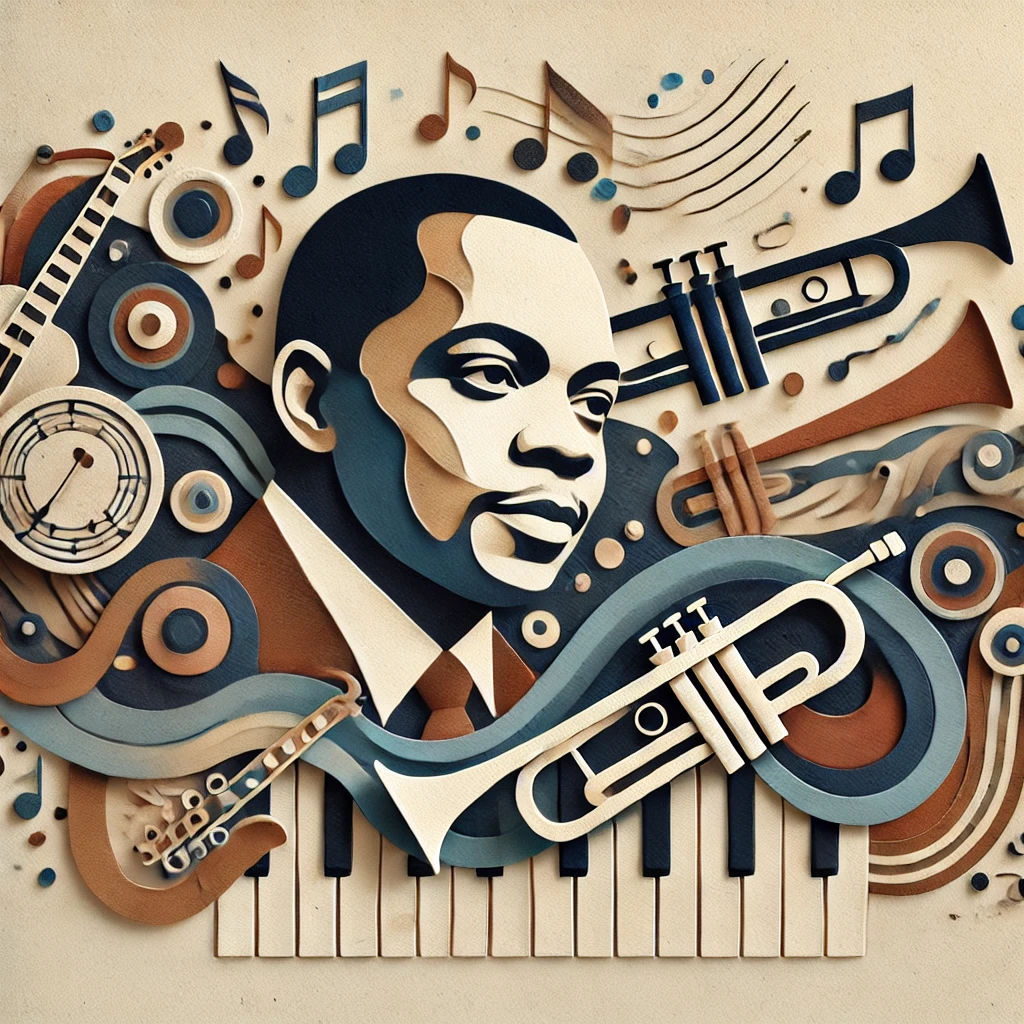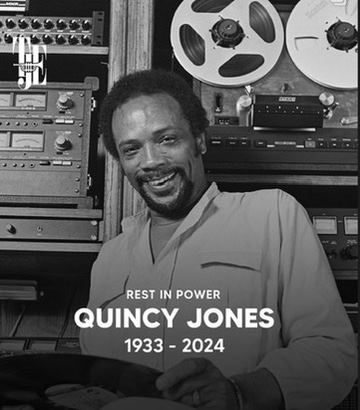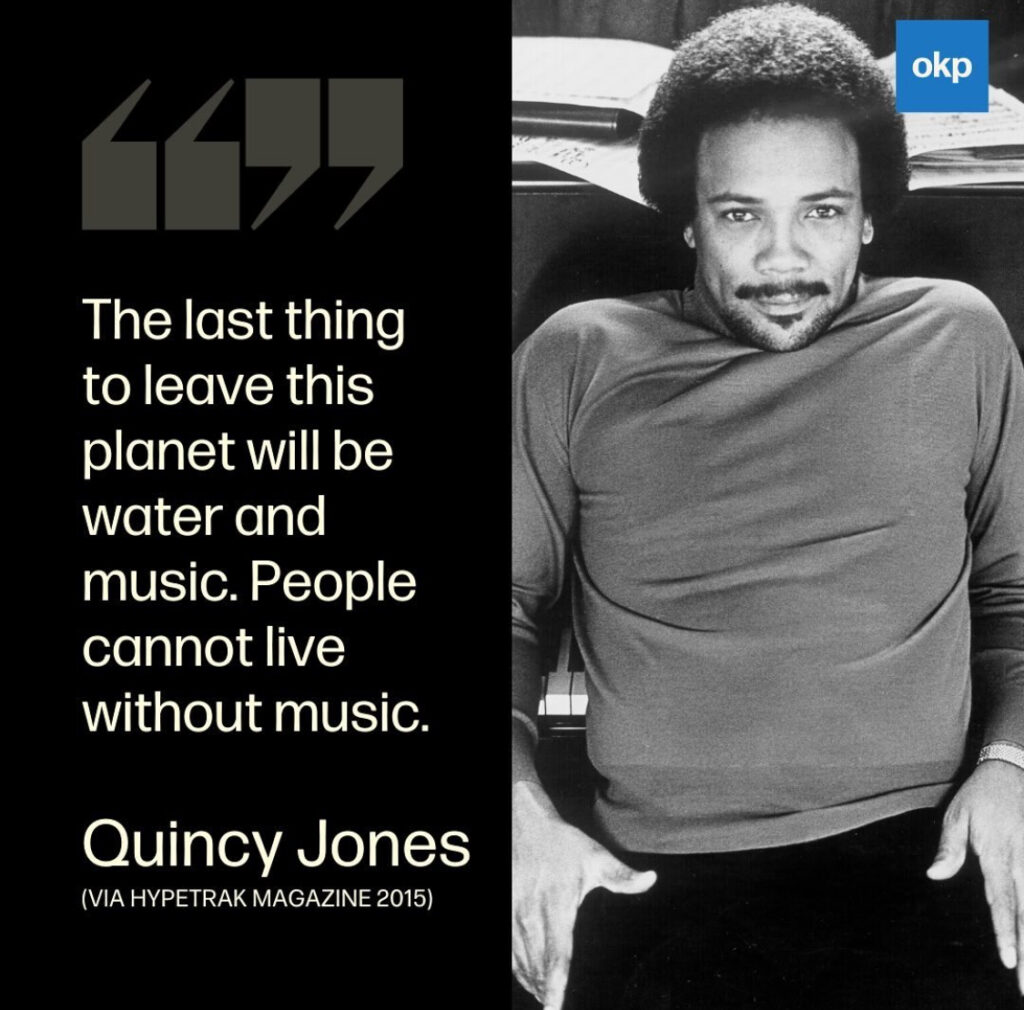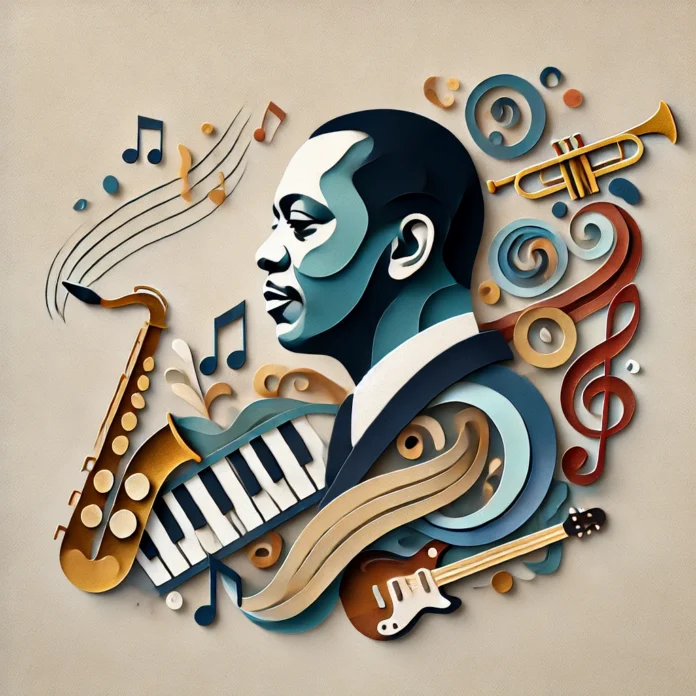A Jazz Legend and Architect of Modern Music
In the passing of Quincy Jones, we bid farewell to a transformative figure whose influence transcends the boundaries of jazz, touching nearly every genre and era of modern music. From his groundbreaking work in jazz, his beginnings in big bands, his collaborations with iconic musicians, to his chart-topping pop productions, Quincy Jones’ career was a testament to his versatility, his profound musical knowledge, and his unwavering dedication to the art. Jones didn’t just play jazz; he elevated it, interweaving its rhythms, harmonies, and improvisational spirit into the fabric of American and global music.

Early Roots: Shaping Jazz in a Time of Change
Quincy Jones’ journey began in an era when jazz was redefining itself. As a young musician, he honed his craft playing trumpet in bands and arranging music, notably joining forces with Ray Charles, a friendship and collaboration that profoundly shaped both their careers. By the time he was in his early twenties, Jones was already arranging for Lionel Hampton’s big band, marking the beginning of his signature style that fused traditional jazz elements with innovative structures and cross-genre experimentation.
Jones’ formative years saw him working alongside some of jazz’s greats, such as Count Basie and Dizzy Gillespie. It was in these spaces that he developed his appreciation for jazz’s collaborative, improvisational heart, something he later infused into his own music and productions. He wasn’t just a participant in the jazz movement; he was shaping it from the inside out, driving its evolution while staying rooted in its essence.

Quincy’s Vision: Blurring Boundaries and Expanding Jazz’s Reach
As he gained experience, Jones began pushing the boundaries of jazz. He understood jazz not merely as a genre but as a language capable of transcending its traditional parameters. This understanding fueled his desire to explore beyond jazz’s established soundscape, leading him to incorporate elements of R&B, Latin music, soul, and eventually pop. His work on albums like This Is How I Feel About Jazz in 1957 displayed a sophisticated, nuanced understanding of jazz that was forward-thinking and accessible.
Jones’ fusion of jazz with broader musical styles helped elevate jazz beyond its niche audience. His arrangements and compositions offered a fresh perspective, resonating with jazz enthusiasts while also inviting new listeners to the genre. He had a gift for making jazz relatable, showing the world that it could be inclusive without losing its depth and integrity. This vision helped bridge jazz’s early days with its modern evolution, making it part of mainstream music culture.
Jazz on the Screen: An Era-Defining Soundtrack
Quincy Jones was a pioneer in bringing jazz to the silver screen, blending its melodies and rhythms into iconic scores for movies and television. His work on shows like Sanford and Son, with its unforgettable theme, and his contributions to films like In the Heat of the Night, The Pawnbroker, and The Color Purple brought jazz into millions of homes and movie theaters. He created soundscapes that were not only musically engaging but also deeply reflective of the stories and emotions onscreen.
Through these soundtracks, Jones showed audiences that jazz could be more than just concert music; it could be cinematic, emotional, and universally resonant. He infused film scores with jazz’s spontaneity and soul, demonstrating how jazz could shape narrative and deepen viewers’ experiences. This work ultimately broadened the genre’s appeal and solidified his role as one of the most versatile composers and arrangers in the industry.

Jazz in the Studio: From Michael Jackson to Beyond
In the 1980s, Jones reached legendary status as the producer behind Michael Jackson’s Off the Wall, Thriller, and Bad—albums that transformed pop music. His production style was rooted in jazz, with a keen ear for complex arrangements, harmonic depth, and rhythmic innovation. With these projects, he wasn’t just producing hits; he was bringing jazz-inspired musicality to the pop world. The layered textures, nuanced rhythms, and meticulous arrangements on these records owe much to Jones’s jazz background, serving as a testament to his genius in bridging musical worlds.
Through his work in pop, Jones helped bring jazz sensibilities into mainstream music, making them palatable and beloved by audiences worldwide. His influence introduced jazz’s sophisticated harmony and groove to millions who might not have encountered them otherwise. And through this cross-genre work, he ensured that jazz’s spirit would endure, even in styles far removed from its origins.
Quincy Jones: A Legacy of Jazz, Innovation, and Humanity
Quincy Jones’ contributions to jazz and music at large are immeasurable. His life’s work was a testament to the power of music as a force that could unite, inspire, and elevate. Jazz, in Quincy’s hands, became more than just a genre; it became a living, breathing entity capable of adapting, growing, and touching the hearts of people across the world.
He taught us that jazz is more than technical virtuosity or intellectual appeal—it’s about heart, soul, and communication. It’s about breaking down barriers and connecting people across cultures, languages, and eras. As we say goodbye to Quincy Jones, we honor not only the notes he played but the message he imparted: that music, like life, is a journey, a blend of influences, an open door, and a celebration of humanity. Through his music, his vision, and his undying spirit, Quincy Jones gave the world a gift it will never forget. And for that, jazz, and indeed all of music, is forever in his debt.


